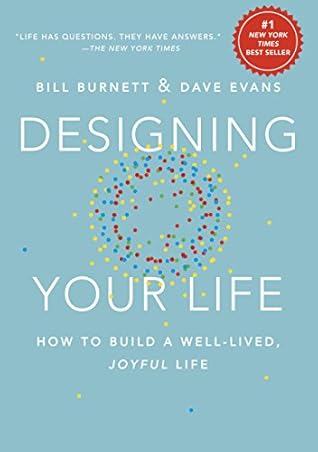More on this book
Community
Kindle Notes & Highlights
by
Bill Burnett
Read between
May 13, 2019 - April 19, 2023
in the United States, only 27 percent of college grads end up in a career related to their majors.
Dysfunctional Belief: Your degree determines your career. Reframe: Three-quarters of all college grads don’t end up working in a career related to their majors.
In America, two-thirds of workers are unhappy with their jobs. And 15 percent actually hate their work.
In the United States alone, more than thirty-one million people between ages forty-four and seventy want what is often called an “encore” career—work that combines personal meaning, continued income, and social impact.
A well-designed life is a life that is generative—it is constantly creative, productive, changing, evolving, and there is always the possibility of surprise. You get out of it more than you put in. There is a lot more than “lather, rinse, repeat” in a well-designed life.
The reframe for the question “What do you want to be when you grow up?” is this: “Who or what do you want to grow into?”
The five mind-sets you are going to learn in order to design your life are curiosity, bias to action, reframing, awareness, and radical collaboration. These are your design tools, and with them you can build anything, including a life you love.
In truth, most people are passionate about many different things, and the only way to know what they want to do is to prototype some potential lives, try them out, and see what really resonates with them.
A well-designed life is a life that makes sense. It’s a life in which who you are, what you believe, and what you do all line up together.
Play is any activity that brings you joy when you do it.
A Lifeview is simply your ideas about the world and how it works. What gives life meaning? What makes your life worthwhile or valuable? How does your life relate to others in your family, your community, and the world? What do money, fame, and personal accomplishment have to do with a satisfying life? How important are experience, growth, and fulfillment in your life?
A Workview may address such questions as: • Why work? • What’s work for? • What does work mean? • How does it relate to the individual, others, society? • What defines good or worthwhile work? • What does money have to do with it? • What do experience, growth, and fulfillment have to do with it?
By having your Workview and your Lifeview in harmony with each other, you increase your own clarity and ability to live a consciously coherent, meaningful life—one in which who you are, what you believe, and what you do are aligned. When you’ve got an accurate compass, you’ll never stray off course for long.
Anchor problems keep us stuck because we can only see one solution—the one we already have that doesn’t work. Anchor problems are not only about our current, failed approach. They are really about the fear that, no matter what else we try, that won’t work either, and then we’ll have to admit that we’re permanently stuck—meaning we’re screwed—and we’d rather be stuck than screwed.
When you’re stuck with an anchor problem, try reframing the challenge as an exploration of possibilities (instead of trying to solve your huge problem in one miraculous leap), then decide to try a series of small, safe prototypes of the change you’d like to see happen.
The Rules of Brainstorming 1. Go for quantity, not quality. 2. Defer judgment and do not censor ideas. 3. Build off the ideas of others. 4. Encourage wild ideas.
The end result of a well-designed life is a life well lived.


